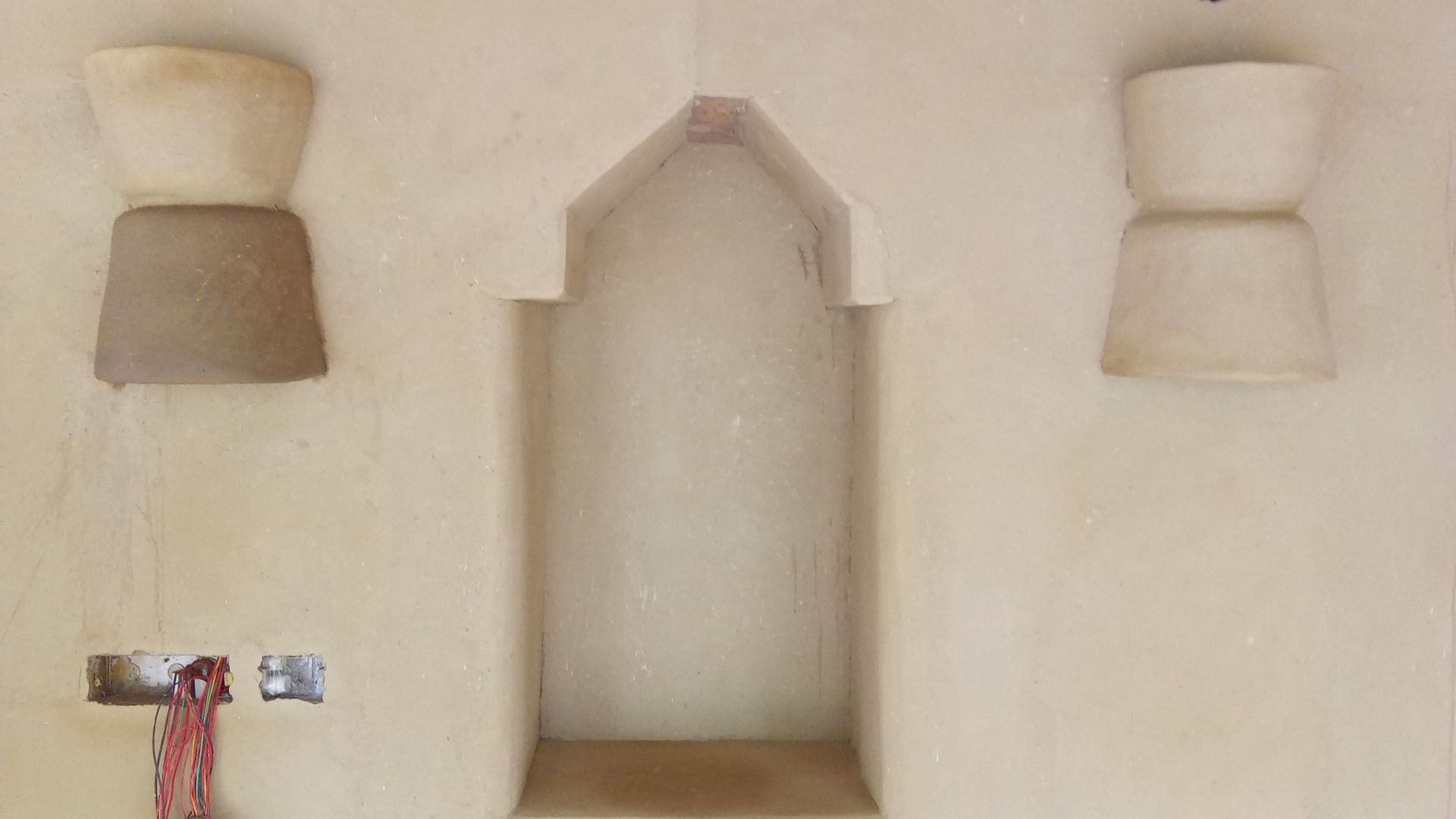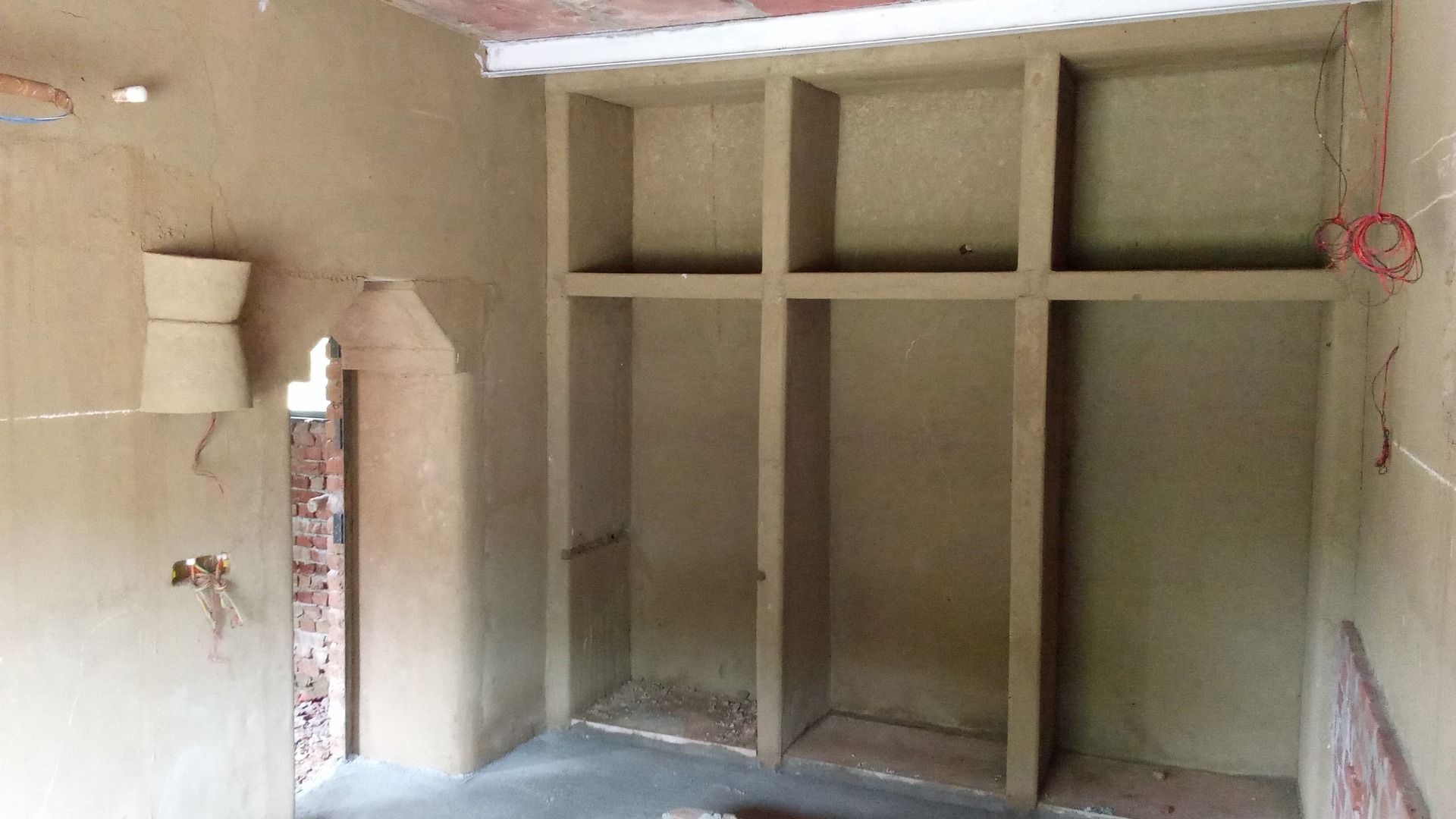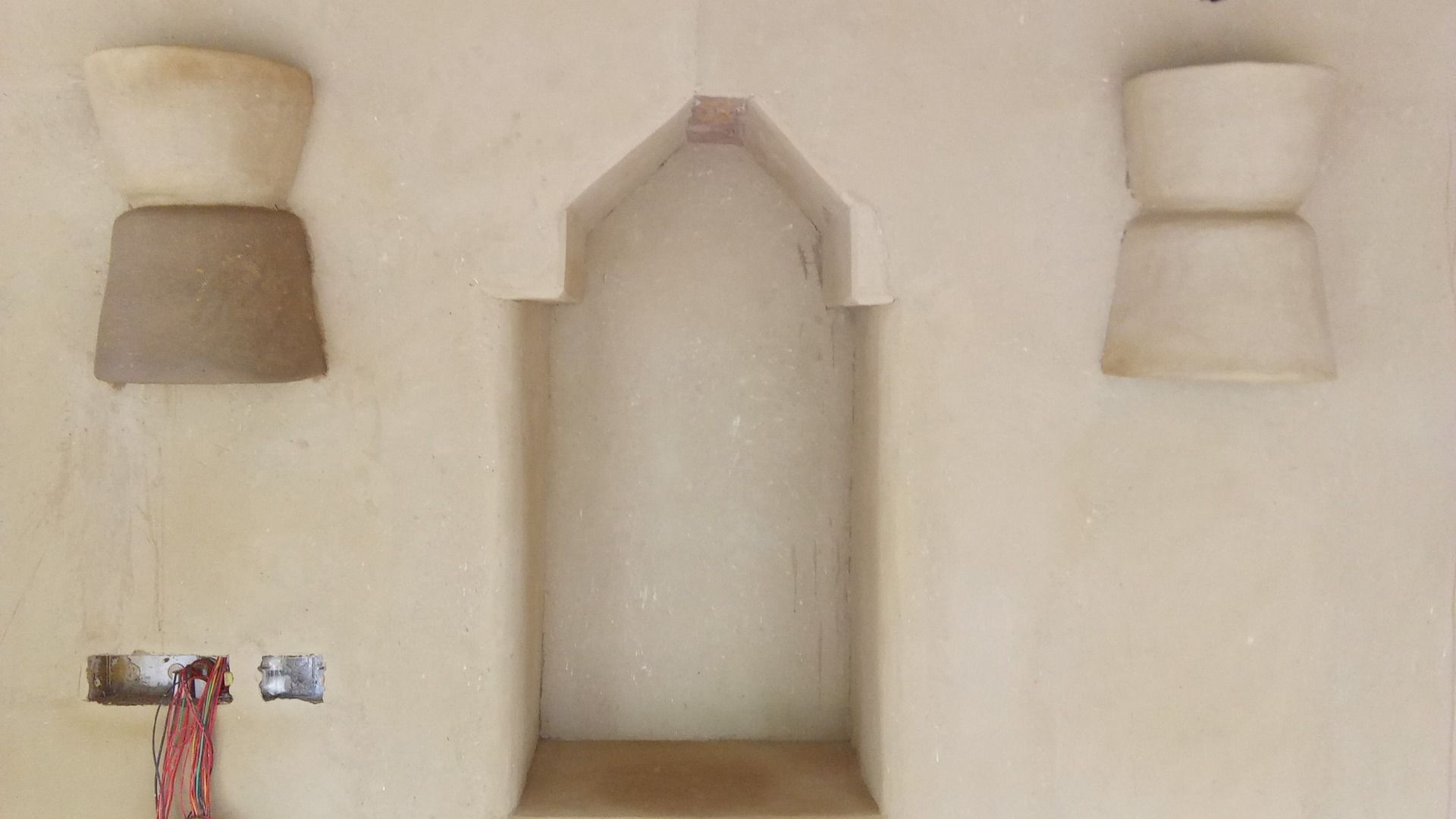- Tiny Farm Friends
- Posts
- Can you do natural interiors in a high-rise apartment?
Can you do natural interiors in a high-rise apartment?
Tiny Insights for building naturally, building beautifully.

No.108 — Read old posts on Tinyfarmlab.com
Reading Time 5 minutes
We get this question a lot.
And the answer is -
yes, absolutely.
Just because you live on the 10th floor
doesn’t mean you can’t live closer to the earth.
You just have to adapt.
There are many ways to bring natural materials into your apartment.
1) Walls
Let’s start with the walls.
Chip off that cement plaster.
Replace it with mud-lime or lime plaster finishes.
They breathe.
They age beautifully.
And they make your walls feel alive again.

Photo: Kalga Banaras in collaboration with Brown Dot Collaborative
2) Partitions
For partitions,
go with wattle and daub,
bamboo weave filled with cob.
Combine it with horizontal surfaces in
stone, glass, or stainless steel
for ease of maintenance.
Soft meets hard.
Warm meets cool.

Photo: Kalga Banaras in collaboration with Brown Dot Collaborative
3) Wardrobes
Build them in wattle and daub too,
with wooden shutters and woven cane or bamboo panels.
They smell of wood and feel handmade.
No laminate, no MDF, no factory shine.

4) Bed
Beds can be sculpted in cob,
with a wooden bed box inside.
A headboard in stone or
woven cane makes it both earthy and elegant.
Think of it as furniture that grows from the floor.
5) Kitchen
Even the kitchen can find balance.
Wattle and daub vertical partitions.
Metal or wooden framed shutters.
A granite top and stone backsplash.
A mix of raw and refined.
Aesthetics and functionality.
6) Lighting and Arches
Lighting can be built right into the walls.
In-situ lamps that glow softly through mud and lime.
Or add arches to enclose corners and create movement.
Built-in sofas and alcoves in wattle and daub and cob.

7) Earthen Flooring and Tadelakht
Even earthen flooring can be done over existing tiles.
And in bathrooms,
try lime plaster or tadelakt,
the Moroccan technique
That’s water-resistant
and silky to touch.
8) Mud and Clay Murals
You can sculpt,
engrave,
use colored natural plasters
and make beautiful murals.
When it comes to decor,
choose consciously.
Banana paper lamps.
Mycelium tables.
Textiles from ethical brands
that work with real craftspeople.
These small choices add up.
The best thing you can do?
Buy locally.
From craft shops.
From small makers.
Support the endangered crafts of your own bioregion.
Because every purchase is a vote
for the kind of world you want to live in.
Now, let’s talk logistics.
Because this is where most people hesitate.
The mud or clay soil can be sourced easily,
from nearby farms in the suburbs,
from a local building material supplier,
or even from an excavation site
if you ask the right contractor.
Sometimes,
even the clay used for pottery works beautifully.
Most high-rise apartments have service lifts,
so materials can be lifted up without a problem.
Local labour and contractors can be trained on-site
to do wattle and daub, cob, and natural plasters.
It’s a democratic process,
no fancy machinery needed.
Just hands, rhythm, and patience.
If you want to go a step further,
the Rajasthani lime plaster traditions are beautiful.
There are masons who’ve been doing
thappi, araish, and lohi finishes
for generations.

They carry wisdom that
no modern paint can replace.
We once did a project on the first floor of a brick,
cement, RCC building in Varanasi
in collaboration with Brown Dot Collaborative.
All the materials were carried up the stairs.
The workers were trained on-site,
to mix, to feel, to apply.
And soon the walls were,
breathing a little bit more,
glowing,
soft under.
The benefits?
They’re many.
Good for the planet.
Non-toxic.
Democratic to work with.
Soft on the eyes, sensual to the touch.
Can return to earth
when the time comes.
Lime is antimicrobial,
and more breathable than any cement finish.
So dampness reduces,
unless there’s external seepage.
And yes,
it even adds to
thermal comfort.
Our granny used to say,
Where there is a will,
there is a way.
Even in a high-rise.
You can still live close to the earth.
Love,
Raghav and Ansh
P.S. : If you are on LinkedIn, let’s connect.
You can read our latest post here.
What you can watch -
What you can listen to - Clayworks - Clay, A Premium Product - Building Sustainability Podcast BS36
If you found value in this newsletter, please consider sharing it with a friend.
Tiny Farm Friends Newsletter.
Every Sunday, we share tiny valuable lessons to help you transition to the countryside and build naturally.


